Most people never think about how they breathe until something interrupts it. Snoring, dry mouth, restless sleep and daytime fatigue often trace back to a simple habit: the mouth keeps opening when it would be better closed. Nasal breathing is efficient, quiet and supportive of good health. Myotape provides a gentle nudge toward that habit, helping lips meet and stay together so the nose does more of the work.
This is not about forcing the airway or toughing it out. It is about retraining patterns, building tolerance and giving your body the chance to use its built-in filters and regulators. Done with care, it can transform nights and sharpen days.
What Myotape Is and how it works
Myotape is a soft, skin-friendly adhesive that sits around the lips rather than over them. The central opening lets you speak and open your mouth if you truly need to. The elastic tension draws the lips together lightly, cueing the brain to keep the mouth closed while still leaving an escape route.
Two things matter here:
- Consistency: repeated cues create a new default.
- Comfort: mild elastic support encourages compliance without feeling trapped.
That simple combination can reduce mouth breathing during sleep and quiet the airway. The tape does not splint the jaw or lock the lips. It reminds, supports and then gets out of the way.
Why nose breathing matters
Breathing through the nose is not just polite. The nose:
- Filters particles with tiny hairs and sticky mucus.
- Warms and humidifies air to protect airways.
- Delivers nitric oxide from the sinuses to the lungs, which improves blood flow and oxygen uptake.
- Encourages diaphragm-driven breathing, which can lower breath rate and quiet the nervous system.
Mouth breathing bypasses those mechanisms. Dry mouth increases plaque and gum irritation. Vibration at the soft palate raises snoring risk. Carbon dioxide levels drop faster with mouth breathing during rapid ventilation, which can destabilise breathing in sleep for some people.
A small change at the lips can shift the whole system upstream and downstream.
Safety first: who should proceed with care
Most healthy adults can try mouth taping during relaxed daytime practice without any trouble. Certain situations call for caution or a clinician’s guidance.
Avoid taping during sleep if you have:
- Untreated moderate to severe obstructive sleep apnoea.
- Significant nasal blockage that prevents you from breathing through your nose at rest.
- Frequent vomiting, nausea or active reflux at night.
- Severe anxiety or panic symptoms triggered by facial coverings.
- A respiratory infection, sinus infection or heavy congestion.
Take care if you have:
- Skin conditions around the lips or an adhesive allergy.
- Recent facial surgery or trauma.
- COPD, heart failure or other cardiopulmonary conditions, unless your clinician has cleared gentle nasal breathing training.
- A beard or heavy stubble, as adhesion may be unreliable.
Children need special handling. Use child-specific tape, practise only while awake and supervised, and seek advice from a GP, dentist or speech and language therapist with training in myofunctional therapy before any night-time use.
Setting a realistic target
Expect meaningful habit change over eight to twelve weeks. The brain adapts to consistent, low-stress practice. Start small, measure, adjust, repeat.
- Choose one or two objective metrics to track.
- Accept off-nights and messy progress as part of the process.
- Favour comfort over heroics. The aim is a calm nose, not a fight with your face.
Baseline checks you can do at home
Before you begin, capture a snapshot of where you are.
- Nasal ease scale: rate each nostril from 0 to 10 at rest. Repeat morning and evening for three days.
- CO2 tolerance test: after a normal exhale, hold your breath until you feel the first clear urge to breathe, then note the time. Record the best of three trials, seated and calm. Many adults sit between 10 and 25 seconds. Do not push hard.
- Sleep notes: log bedtime, wake time, awake periods at night and dry mouth on waking. A bed partner’s snore rating helps.
- Short reading aloud test: read for three minutes, lips closed if possible. Note any need to mouth breathe.
These quick checks help you select the right starting point and see improvement later.
A habit correction programme you can follow
The table below offers a simple progression. Adjust based on comfort and nasal patency.
| Week | Daytime practice | Night-time use | Focus | What to track |
|---|---|---|---|---|
| 1 | 2 to 3 sessions of 10 minutes with myotape while reading or screen time | None | Calm nasal breathing, no strain | Nasal ease scale, CO2 test |
| 2 | 2 sessions of 15 to 20 minutes | Optional: 30 to 60 minutes at the start of the night, remove if uncomfortable | Settling anxiety, gentle tongue-to-palate posture | Dry mouth on waking, snore app sample |
| 3 | 1 to 2 sessions of 20 to 30 minutes | First half of the night if tolerated | Sleep position and nasal hygiene | Sleep notes, partner feedback |
| 4 | 20 minutes early evening plus full-night trial every second night | Alternate nights, remove if congested | Consistency without forcing | Dry mouth, night awakenings |
| 5 to 8 | Maintenance: 10 minutes before bed | Full night most nights | Small adjustments, skin care | Weekly CO2 test, daily notes |
During all weeks, pause whenever you feel unwell or blocked. Resume when you can breathe through your nose comfortably at rest.
How to apply tape without drama
A smooth routine prevents irritation and improves confidence.
- Wash and dry the skin around the lips. Oils and moisturisers reduce adhesion.
- If you have facial hair, trim slightly or consider a tape format that anchors on the cheeks rather than the upper lip.
- Place the tape so the central opening sits over the lips. Lightly press the perimeter to secure.
- To remove, support the skin with one hand and peel slowly with the other. If needed, dampen the adhesive edge with warm water.
Skin tips:
- Patch test on the inner forearm for 20 minutes the day before your first session.
- Rotate placement slightly to avoid repeated stress on the same skin.
- If you experience redness that lasts into the next day, take a break and try a silicone-based or paper tape later.
- Never cover the nostrils.
The breathing drills that support success
Tape is a cue. Drills create capacity.
-
Silent, light nasal breathing
Sit upright. Close your lips gently. Breathe only through the nose, feeling the air at the tip of the nose. Aim for quiet, minimal movement and a soft abdomen. Five minutes is enough. -
Humming for nitric oxide
Inhale through the nose, then hum softly on the exhale for twice as long as the inhale. Repeat for one to two minutes. Humming increases nitric oxide in the nasal passages, which may improve airflow. -
Nose-clearing technique
If a nostril feels blocked, try this sequence: small inhale through the nose, small exhale, pinch the nose and nod the head for five to ten seconds, then release and breathe gently through the nose for 30 seconds. Repeat two to three times. Stop if dizzy. -
Tongue posture reset
Place the tip of the tongue behind the top front teeth, not touching them, then spread the tongue across the palate, lips closed. Hold while breathing quietly for two minutes. This supports the upper airway. -
Straw test
Place a clean straw between the lips without biting. Now close the lips around it and breathe through the nose only, keeping the straw dry. One to two minutes, then rest.
Drills should feel light. If you are panting or sighing at the end, shorten the duration.
Night-time routine that helps the tape do its job
- Clear the nose with a saline rinse 30 to 60 minutes before bed.
- Keep the bedroom slightly cool and not too dry. A small humidifier can help in winter.
- Sleep on your side if snoring is a sore point. Side sleeping reduces airway collapse risk in many people.
- Limit alcohol late in the evening, as it relaxes airway muscles.
- If you wake anxious, remove the tape, take a few slow nasal breaths, then decide whether to reapply.
CPAP users often ask about taping to reduce mouth leaks. Do not make changes to your setup without a conversation with your sleep clinic. In some cases, a soft chin strap or mask adjustment achieves the same goal without adhesives.
Using myotape in sport and daily movement
Nasal breathing during light to moderate activity teaches the body to tolerate higher carbon dioxide levels and encourages a quieter breath pattern. Start with:
- Warm-ups and cool-downs while taped for 5 to 10 minutes.
- Easy walks where conversation is comfortable.
- Mobility work, yoga or stretching sessions.
Do not use tape during high-intensity workouts or any activity where you might need to breathe hard through the mouth. The aim is to add calm practice, not to push.
Troubleshooting common hurdles
Anxiety or claustrophobia
- Start with a tiny strip at the centre of the lips or a version that leaves a generous gap.
- Practise while watching a favourite show to distract the mind.
- Use short timed intervals and build gradually.
Stuffy nose at night
- Do not tape. Run your nose-clearing drill, use saline and try again the next evening.
- Check room humidity and reduce allergens in bedding.
Skin irritation
- Switch to a different adhesive type, shorten wear time and ensure full drying before application.
- Use a thin barrier layer around but not on the lips, for example a ceramide moisturiser applied well before taping.
Drooling or dampness
- Normal early on. It usually settles as the tongue and lips coordinate.
- Keep a small towel on the pillow and do not overtighten tape to chase a perfect seal.
Snoring persists
- Move to side sleeping, adjust pillow height and try a nasal dilator strip along with myotape.
- If snoring is loud or you feel unrefreshed, ask your GP for a sleep assessment.
What the research suggests so far
Evidence on mouth taping is growing but not yet large. Small trials and case series report:
- Reductions in snoring loudness and frequency in people with habitual mouth breathing during sleep.
- Modest improvements in apnoea metrics in mild cases when the main issue is oral leak rather than airway collapse.
- Improved subjective sleep quality and less morning dry mouth.
The physiology behind nasal breathing is well established. Nitric oxide production in the paranasal sinuses supports pulmonary function. Nasal resistance encourages a steadier breath with diaphragm involvement. Dental and orthodontic fields have long noted the impact of mouth posture on oral health.
Gaps remain. Larger, well-controlled studies would help clarify who benefits most and how tape combines with other therapies. That should not stop sensible trials at home for suitable people, but it does argue for an open mind and careful self-monitoring.
Complementary approaches that pair well with myotape
- Myofunctional therapy: targeted exercises for tongue strength, lip seal and swallowing patterns guided by a trained therapist.
- ENT care: allergy management, nasal steroid sprays, turbinate care and, when indicated, structural interventions for severe blockage.
- Dental input: evaluation of bite, palate width and tongue space, especially in children. Expansion appliances or orthodontics may be considered where appropriate.
- Lifestyle inputs: weight management, resistance training for the upper airway, reduced evening alcohol and consistent sleep timing.
Think of tape as the cueing device. The rest builds capacity and removes barriers.
Measuring progress without getting obsessed
Pick two to four metrics that are easy to collect and meaningful to you.
- Dry mouth on waking, rated 0 to 10.
- Snore minutes per night recorded by a phone app sample twice a week.
- CO2 tolerance test once per week at the same time of day.
- Bed partner report on snoring intensity once a week.
- Sleep timing consistency and daytime alertness rating.
If numbers stall for two weeks, review your routine. Ensure your nose is clear, adjust tape comfort, reconsider sleep position and keep intensity low during drills.
Special notes for parents
Mouth breathing in children can link to crowded teeth, bedwetting, restless sleep and daytime behaviour. Early changes can help growth. Safe steps:
- Teach tongue-to-palate posture as a daily game.
- Encourage nasal breathing during screens, reading and homework.
- Use child-size tapes only during supervised daytime sessions. Never tape a child’s mouth at night without professional guidance.
- Seek input from a dentist, ENT and, when indicated, a myofunctional therapist. Allergy care can be a game-changer.
The goal is a calm, closed-mouth default with lips able to part easily when needed.
FAQs
Is it safe to use if I need to breathe through my mouth occasionally
Quality tapes with a central opening allow a quick mouth breath if pressure rises. Start with formats that leave more space and practise removing the tape calmly.
Will this fix sleep apnoea
Taping may reduce mouth leak and snoring in mild cases where the primary issue is an open mouth. It does not treat airway collapse by itself. If you suspect apnoea, seek a formal assessment before experimenting at night.
Can I use it during a cold
No. Wait until the nose is clear at rest. Daytime drills without tape can continue if comfortable.
What about pregnancy
Daytime nasal breathing practice is often fine, but check with your midwife before any night-time taping. Prioritise comfort and never force through congestion.
Does it change jaw alignment
Not directly. It promotes lip seal and better tongue posture, which can support healthier patterns over time, especially when combined with myofunctional exercises.
How long until I notice changes
Some people feel a difference in dry mouth within a few nights of partial use. Snoring and sleep quality often shift across four to eight weeks of consistent, comfortable practice.
What if I wear a retainer or aligners
Many users tape successfully with retainers. Check with your dentist if you have concerns, and start with short daytime sessions to test comfort.
A sample day with habit support baked in
- Morning: 5 minutes of silent nasal breathing, tongue posture reset.
- Midday: two minutes of humming, quick nasal ease check.
- Late afternoon: 10 to 15 minutes of taped reading or admin work.
- Evening: saline rinse if needed, light side-lying stretch, 10 minutes of calm tape time.
- Night: apply tape for the first half of the night if comfortable, remove if congestion or restlessness shows up.
Small, repeatable actions beat occasional heroic efforts. Treat myotape as a tutor that fades into the background as your body relearns the comfort of a quiet nose and a soft lip seal.











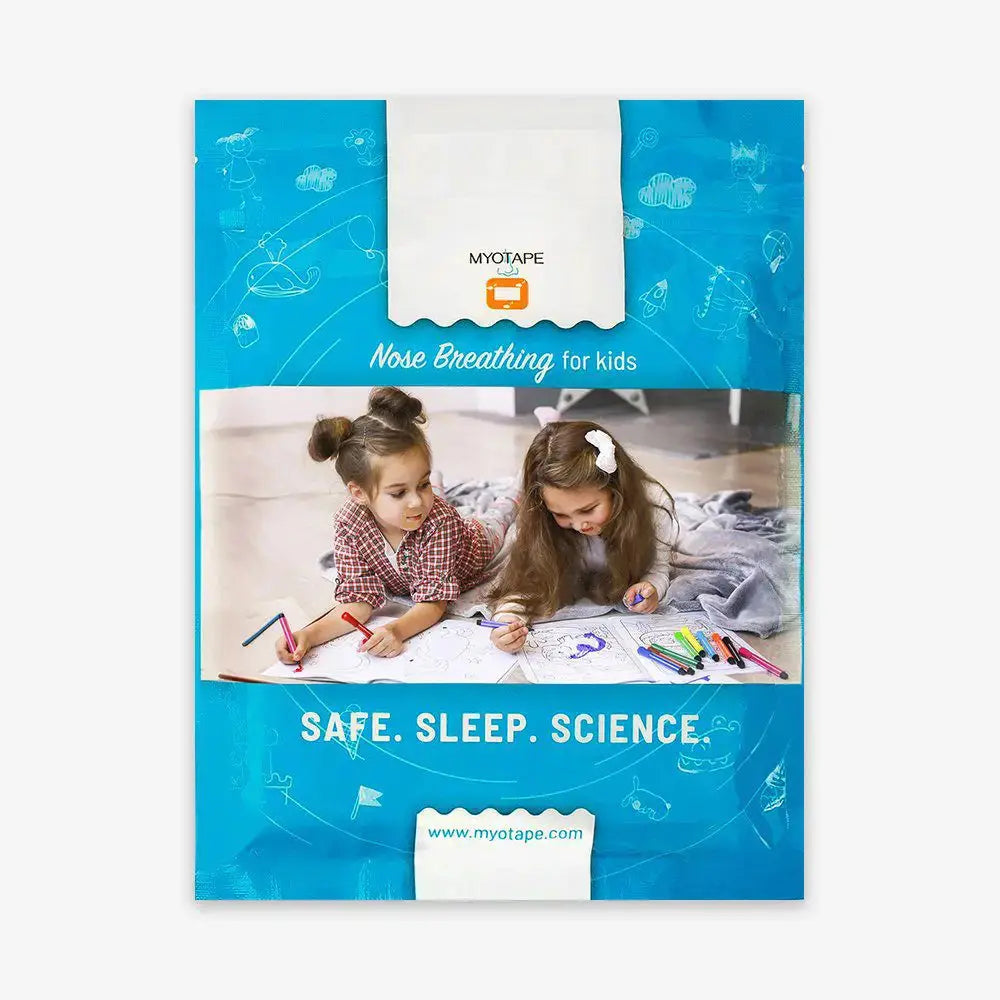
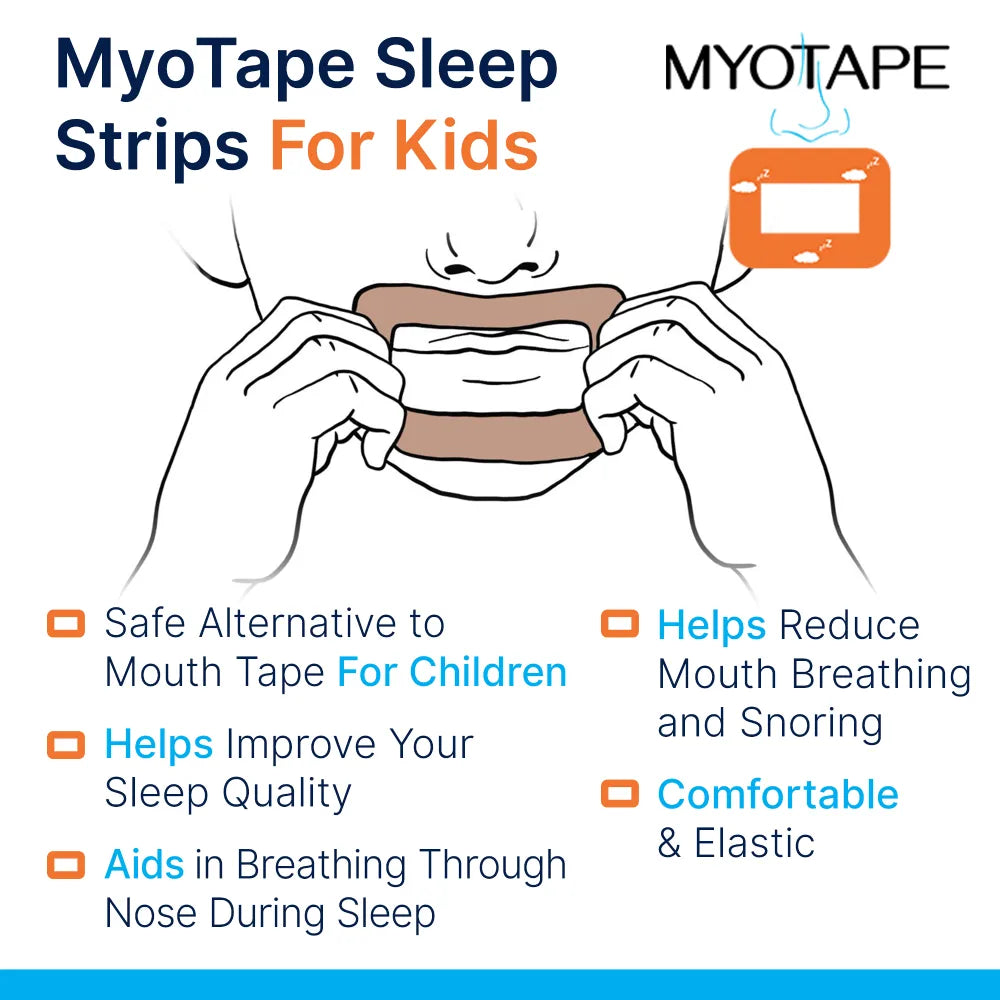
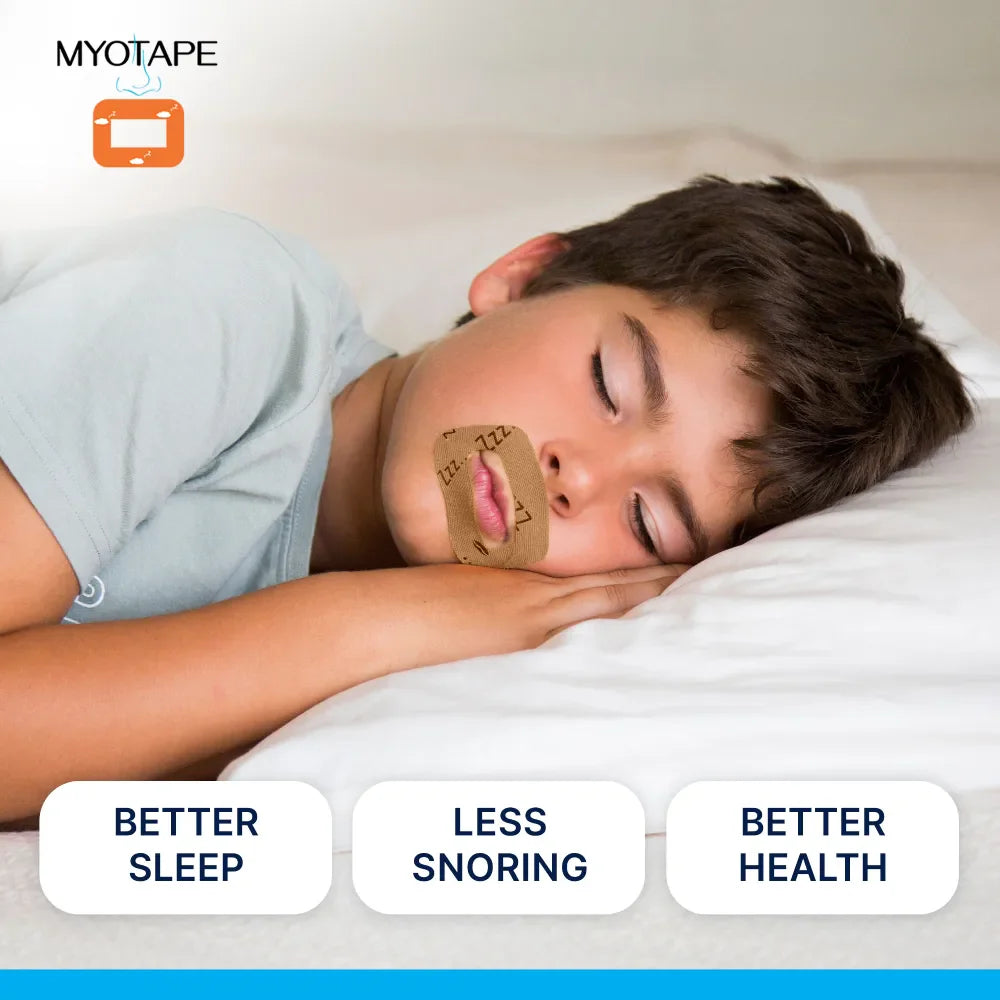
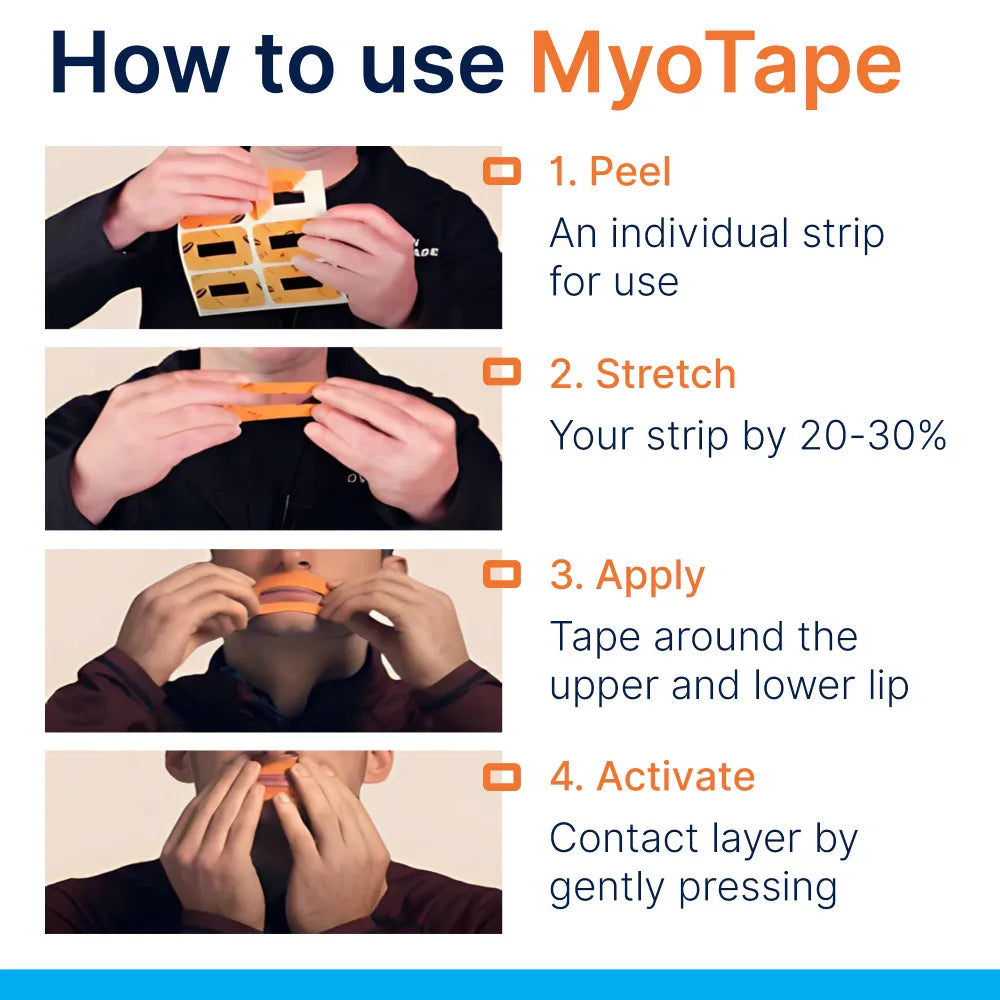
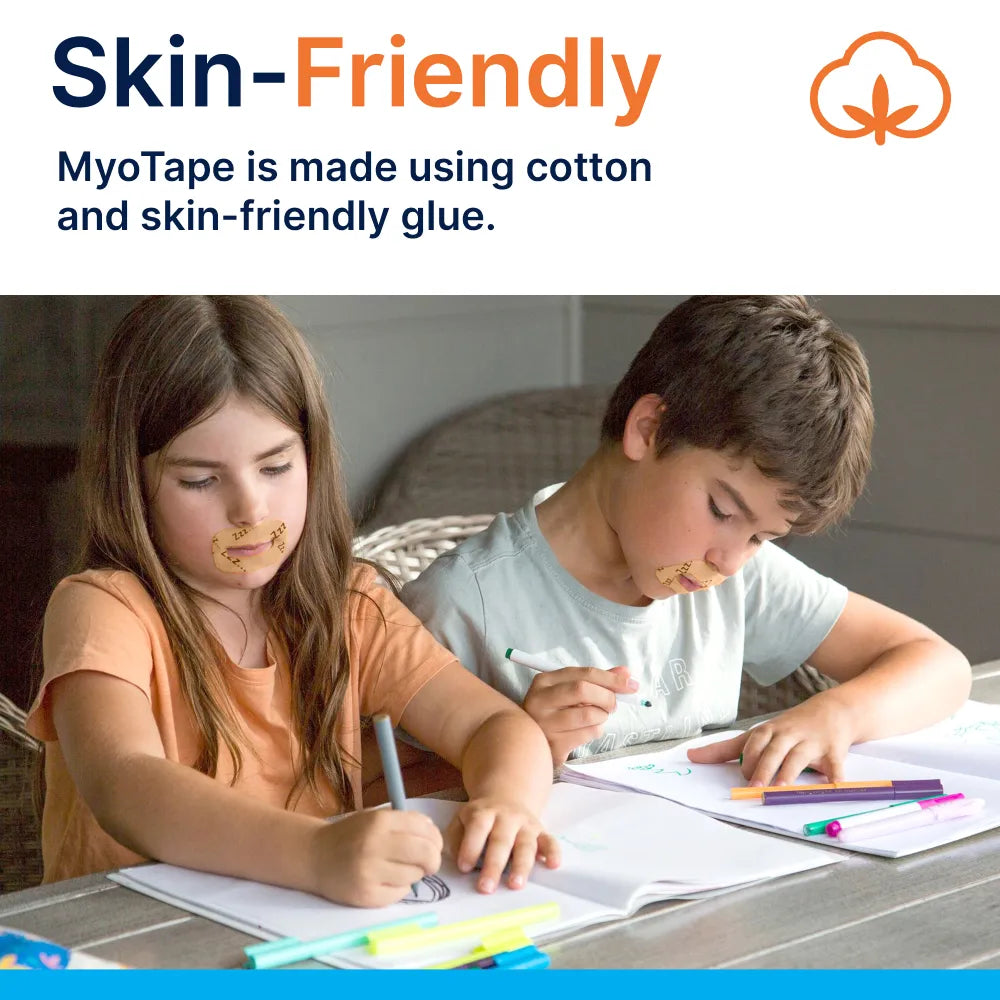










0 comments